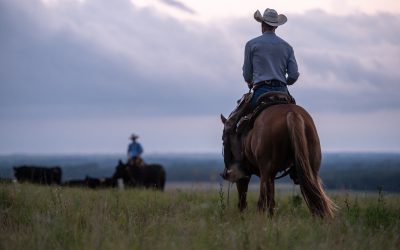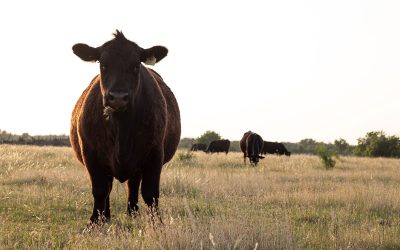
A recipe for high-quality beef
Our first stop on the recent CAB Master of Brand Advantages (MBA) tour was just south of White City, Kan., home to some superior Angus genetics as well as the 2012 Farm Mom of the Year, Debbie Lyons-Blythe. (You may also remember she guest blogged right here last year.)
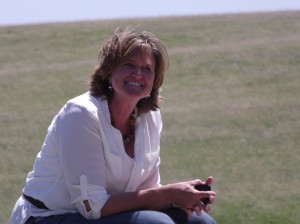
Aside from her full-time duties as mom and purebred producer, she writes a blog titled, “Life on a Kansas Cattle Ranch.” Haven’t heard of it? Look it up, you won’t be disappointed.
Every spring, when conditions allow for it, cattlemen (and cattlewomen) in the tall grass prairie use controlled burning to disrupt the natural progression of prairie grass into forests. This method kills the emerging shrubs and scrubby trees and removes the old, dead grass that holds very little nutrition.
Producers like Debbie don’t burn because they are all pyromaniacs, but because pasture health is important to raising high-quality beef.
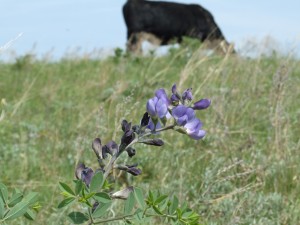
“Environment and genetics go hand in hand,” says Debbie. She explained this to MBA participants through a story about her identical twin boys.
They came from the same embryo, so they hold the same genetic potential. But at the age of 3, one of the boys became very sick when his digestive system stopped utilizing nutrients, halting his growth.
Without the proper nutrition, he became much smaller and lighter weight than his brother. His digestive disorder eventually cleared and he began to grow again. The twins are now 18 with a difference of less than ¼ inch in height and 10 pounds in weight.

“Because of our experience, I believe wholeheartedly in genomic testing of our breeding stock,” says Debbie. “We can work hard on the environment, but without the proper genetics, we won’t make much progress in the quality of the beef we serve. On the flip side, we can spend good money on high-quality genetics, but without good pasture and feed, the genetic potential may go unrealized.”
I was an active 4-Her for 11 years. Baking for the county fair was always a very delightful task. (That was sarcasm if you didn’t catch it. And this WILL come back around to cattle…)
One year I remember being so excited to bake a loaf of banana nut bread by myself. I followed the directions carefully, but when I took it out of the oven it looked horrible. It looked so bad I think my mom was scared to even feed it to the dogs. Retracing my steps, I learned that I forgot to include the bananas.
Like my banana nut bread, our cattle have a recipe for success. Imagine that their grazing environment is the banana and the other ingredients are the genetic traits we select. If you forget to put in the banana or stir in some old, dead grass and mix in some brush, then all the other ingredients don’t matter.
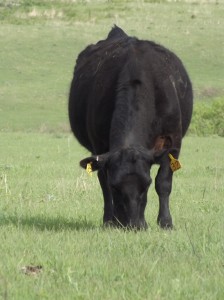
It takes both environment and genetics to raise high-quality beef, so next time you are planning pasture rotations or nutrition plans remember not to skimp on the “banana.” It’s pretty important to the recipe.
-Kaitlin
You may also like
Progress from small steps
Every day is a chance to learn and get better. Thousands of others like my new friends in Alabama are taking steps to meet the shifts in consumer demand, and to know more. Small steps in the right direction can start now. Even if it’s just recording a snapshot of where you are today, a benchmark for tomorrow.
Not perfect, but working to get better
The CAB Cattleman Connection team heard its name called more than once in the virtual ceremonies, and each time came a sense of personal accomplishment, but even better: confirmation that we’re getting better at our craft. I hope that means we’re doing a better job for you.
Beefed up findings
Frank Mitloehner presents his findings on the animal ag sector’s impact on global warming. He explains how cattle counterbalance other fossil fuel sectors, proving that cattle are a solution and not a threat.


